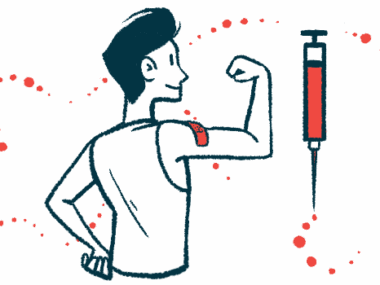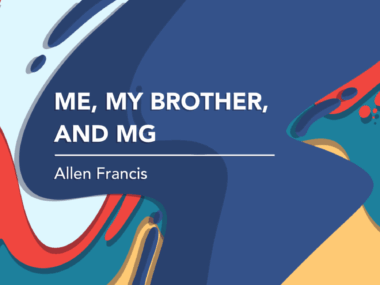‘Whom do men say that I am?’: Redefining identity in life with MG
As someone with a rare disease, do others see the real me?
Written by |

A recent Washington Post article, written in the form of a multiple-choice quiz, challenges many of the assumptions made about people with “disabilities.” I put disabilities in quotations because my feelings about that term are complex and mostly negative.
Putting my unease aside, I agree that “research shows that unconscious bias against disabled people is common, but experts say it is difficult to recognize.” When I finished the quiz, I began to think. As someone with myasthenia gravis (MG), do I encounter biases I’m unaware of? Does MG define me in ways I haven’t recognized? If I were to ask others, “Who do you say I am?” how would they respond?
Human history is a search for self-definition
Humans have asked these questions since we first roamed the planet. Through the Lascaux cave paintings, we know that humans have been attempting to define themselves in relation to the world for at least 17,000 years. Machu Picchu, Stonehenge, and the Mesoamerican and Egyptian pyramids all bear witness to our attempts at self-definition.
As I continued to reflect, one question kept returning to my consciousness. In the New Testament, Christ asks his followers, “Whom do men say that I am?” The disciples give various answers, but Christ presses them. “But whom say ye that I am?”
Issues of faith and divinity aside, this seems to me the question that I, as one who lives with a rare disease, need to ask others. Sure, I can place myself in many categories — son, brother, lover, friend. But my question to others is this: When you look at me, when we encounter one another, who do you see?
Can you see the me beyond myasthenia gravis?
When I meet people for the first time, I want them to see the real me. As others with rare diseases can testify, we are much more than our illnesses. Our family and loved ones most likely recognize this. The wider community we live in may not.
A friend recently learned she was pregnant. Several of us planned a dinner get-together. Some of the group knew about my MG. Others did not. At the last minute, due to severe exhaustion, I had to pull out of the gathering. To some, this appeared rude and inconsiderate. I wanted to clear things up, so I texted the group explaining how MG impacts my life. When they heard my story, they were understanding, compassionate, and loving. Without my explanation, if I had asked, “Who do you say I am?” the answer might have been a rude guy with little consideration for others.
Invisibility can bring misunderstanding and hurt
Many rare diseases aren’t immediately apparent, which can result in some making harsh, hurtful judgments. Friedreich’s Ataxia News columnist Kendall Harvey captured this experience well. One day, when she parked in an accessible spot, a man questioned her right to use the space. After she explained that she needed accessible parking due to Friedreich’s ataxia, he replied, “Now that you say something, I see it. You walk and talk like you’re a little drunk.” He’d judged her instead of viewing her as a multifaceted woman.
As former MG News columnist Jodi Enders wrote:
“After we share our diagnosis with others, we are often treated differently. Some may be positive and supportive, but we may confront others who label us as ‘sick’ or ‘disabled’ without permission. Society places us into a box based on stereotypes. The sides of the box are the limits of where people are willing to accommodate and understand us.”
Perhaps one challenge those of us with rare diseases face is breaking out of these boxes and being seen for who we are.
Heading back to high school days
Thinking about this column brought me back to my teenage years. Anyone who was cool listened to The Who while driving around town, windows down, cassette tape blasting, trying to buy beer from local package stores. Good Lord, how far we’ve come! In Ultimate Classic Rock‘s ranking of the greatest hits of 1978, “Who Are You” is No. 6. I still know the lyrics by heart. Back in ’78, I couldn’t have known I’d find meaning in them 45 years later.
I can still hear those lines vibrating through the air: “Well, who are you? (Who are you? Who, who, who, who?)/ I really wanna know.”
Building new, loving relationships
MG made me redefine myself. If you really want to know who I am, I’d love to share that person with you. I hope the answer to “Who do you say I am?” is more than a guy with MG. Perhaps we can drop considerations such as “disability.”
The Apostle Peter saw the essence of Christ. For this, Christ called him Petrus — the rock. Maybe the next stranger I meet will see my essence. That can be a rock upon which a new, loving relationship can be built.
Note: Myasthenia Gravis News is strictly a news and information website about the disease. It does not provide medical advice, diagnosis, or treatment. This content is not intended to be a substitute for professional medical advice, diagnosis, or treatment. Always seek the advice of your physician or other qualified health provider with any questions you may have regarding a medical condition. Never disregard professional medical advice or delay in seeking it because of something you have read on this website. The opinions expressed in this column are not those of Myasthenia Gravis News or its parent company, Bionews, and are intended to spark discussion about issues pertaining to myasthenia gravis.







Leave a comment
Fill in the required fields to post. Your email address will not be published.